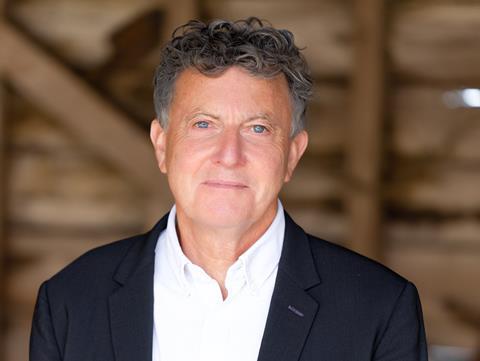The urgency of the climate crisis requires professional bodies to work across international borders to deliver change, writes Chris Williamson

We are witnessing yet another COP summit. We understand the actions that need to be taken – they haven’t changed, but with every moment of inaction the need to act becomes more urgent. We know that cities are the leading source of greenhouse gas emissions. Analysis shows that they consume 78 percent of the world’s energy, yet account for less than two percent of the Earth’s surface.
As architects, we understand our role is to address the contribution of this small but vital fraction of the world to a warming planet. This is a global challenge that should unite our profession, but the organisations we look to for leadership too often focus on politics and issues close to home – and too often, that home is London, not even the rest of the UK.
Marvin Gaye was singing about the state of the environment in 1970. It was an issue then, and we should have acted then. Looking back, the pace of realisation, let alone action, has been far too slow.
In 1979, I won the inaugural Inplan Award, established by Tarmac to encourage architecture students to propose ideas for energy conservation. I chose to study the Leicester University Library by Castle Dean Hook, looking at ways to improve its planning, cladding, servicing and insulation. It was a retrofit project of the kind we now acknowledge as the way forward, yet throughout the decade that followed, it was difficult to convince even enlightened clients that sustainability was a pressing issue.
After we won the Jubilee Line station for London Bridge in 1990, much of my career focused on getting people out of their cars and onto well designed public transport. At last, most major cities are looking to do the same.
With achieving net zero now every architect’s biggest challenge, we need clarity in focusing the vast expertise in our industry on the task. In many respects, this work is already well underway – there are countless exemplar projects and initiatives, yet still we see demolition where there is potential for reinvention, still leaky older buildings with poor insulation, still short-term thinking that fails to anticipate changes in use.
I am a passionate believer that the key to bringing more impact to climate action is greater collaboration across disciplines and national borders. Every construction project, particularly the large transport schemes I have been part of over the years, has relied on the successful cooperation of a multidisciplinary team, often spread across continents.
It was urgent in 1979 and it’s even more urgent now
As architects, it’s what we do well. When I was International Vice President at the RIBA, I met with the heads of many similar institutes in other countries. There was a natural affinity. We found that we had great interest in collaborating, but it has yet to become a meaningful reality.
Imagine the strength of the network, the opportunities for sharing knowledge, if a professional body evolved into a worldwide community of architects. In particular, think of the benefits within each sector, the chance to share specific insight on a building type or common issue, whether that’s the integration of heat pumps or timber construction.
Access to this network could make professional membership more attractive – at present, RIBA membership, for example, is optional and not compelling to overseas architects, who are only able to access limited benefits.
And what about the UK’s relationship with Europe, and the cross-border sharing of expertise? There was an interesting poll at the start of the year of the impact of Brexit on the profession – only one studio surveyed said they wouldn’t want to rejoin the EU if there was the option, the majority would rejoin and a few were unsure.
As the number of European architects looks set to dwindle further, we should be lobbying the government for more support for our industry – for reciprocal arrangements to allow British architects to work abroad, and for foreign architects to work in the UK more easily. Greater cooperation between professional bodies could help to mend the ties that Brexit too swiftly and bluntly cut.
Weston Williamson is now part of the Egis Group, and a major factor in that decision was shared ambition and collaboration on knowledge sharing. Egis wrote the Paris 2050 Climate Change Plan, and we wanted to join forces with the architects and engineers that had that knowledge and those skills. We didn’t want to remain influencers; we wanted to be part of change.
The RIBA’s international reputation is strong. For architecture, but also for ethics, social value and sustainability. Why aren’t we doing more to open up opportunities for RIBA members to work abroad?
I’m using the example of the RIBA here based on my own past experience, but this isn’t an issue limited to one organisation – it applies equally to the RPTI, for example, or the AIA in the United States. We should be working more collaboratively with our colleagues overseas, and the reasons we’re not are essentially bureaucratic.
I believe that we need to come together to face a common existential threat – and our professional membership bodies, such as RIBA, have the potential to be that global platform for change. At present, there is no real leadership or even consensus on the top five things we all need to act on to limit climate change, and the government keeps moving the goalposts.
It was urgent in 1979 and it’s even more urgent now.
>> Also read: We’re so busy worrying about the impact of artificial intelligence on the profession, we neglect our own learning
Postscript
Chris Williamson is chair of Weston Williamson + Partners.
















No comments yet